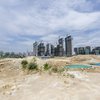Real Estate Market Report for February 2020

Market forecasts for the commercial real estate market in Canada in 2020 predicted a year of stability, following the economic uncertainty that pervaded 2019. Incremental economic growth, combined with more activity in the manufacturing sector and historically low unemployment rates were expected to contribute to healthy economic conditions for the start of the new decade. However, 2020 has begun with a rather tumultuous start. The first phase of a trade deal between the United States and China has been completed, which may impact the demand for Canadian products from both of those trading partners.
Additionally, markets internationally have been tested by heightened fears of the economic effects of the spread of COVID-19 worldwide. Some investors have opted for more secure assets such as gold, divesting from riskier assets. The price of oil is also predicted to fall due to less demand from China, coupled with lower tourism levels as consumers hold back on making vacation plans. In 2003 during the SARS outbreak, Canada’s GDP experienced a sharp, short-term downturn, followed by a brisk rebound, leading to a net GDP reduction of 0.1%. Experts suggest that the Bank of Canada may reduce the key interest rate to cope with the potential negative economic outcomes of the virus. It remains to be considered whether an interest rate decrease, as was predicted in 2019 to be brought forth early in the new year, will stir sufficient economic and real estate activity to maintain healthy economic conditions.
Business investment was forecasted to be a key driver for the Canadian economy in 2019, but the troubled oil industry in Alberta dampened this sector. However, the Supreme Court’s ruling at the beginning of the year, which ruled against the province of British Columbia’s attempt to halt the construction of the Trans Mountain pipeline, may be a catalyst for the project to continue and therefore improve the oil industry in Western Canada. Worries concerning the oil industry from investors in Western Canada may also be quelled, resulting in greater economic stability and growth. Construction of the pipeline will propel Alberta’s oil industry into new, lucrative markets, contributing to economic growth across the national economy.
Market analysts are also highly optimistic about economic outcomes in Ontario. Companies continue to have access to a resilient labour market, given a stable number of incoming immigrants to fuel the workforce. Although the unemployment rate in the province increased slightly by 0.2% between October and December of 2019, the unemployment rate still remains remarkably low, with a notable 82% of employees working full-time. Increases in employment in Ontario are concentrated both in the technology sector and the finance, insurance, and real estate sector. The low unemployment rate may be a significant contributing factor to strong retail sales, which increased by 1.6% in November to offset the 2% decrease seen in October of 2019. Growth in sales was also seen in 70% of sectors, particularly in the automotive industry.
In the Greater Toronto Area (GTA), real estate markets for office, industrial, and commercial spaces are quickly growing faster than in other markets in Canada. Office market vacancy in January 2020 sunk 40 base points from January of the previous year to reach 4.6%. In the same amount of time, the average rental rate rose 4.1% to $21.81 per square foot. Extremely low vacancy rates and high rents can largely be attributed to very strong demand for finance and technology tenants. Continued high demand for office space is driving construction activity, with 11.7 million square feet of office space currently being built in the GTA.
The vacancy rate for the industrial market in the GTA has experienced a 10 base point rise to 1.4%. Rental rates for industrial spaces have soared by 16% year-on-year to $9.17 per square foot per year, as new industrial spaces are not being constructed given a lack of available land, along with high levels of demand for transportation, distribution, and warehousing space. Landlords of newly constructed builds can expect to fetch even higher rents because of ascending construction and land prices. To meet the very strong demand, 14 million square feet of industrial space are under construction, however, analysts predict that the vacancy rate will endure at very low levels under 2% into next year. As the industrial real estate market continues to thrive, industrial spaces found in sought-after locations have become investment opportunities for redevelopment or repurposing, with which landlords would have to charge even higher rents to meet profit margins. As such, mixed-use industrial spaces are becoming realistic and enticing investment opportunities.
International retailers are likely to concentrate their efforts on entering the Canadian market by investing in retail spaces in the GTA. The vacancy rate for retail space has dropped 30 base points to 1.7%, a trend that is likely to continue. In parallel to low vacancy rates, rental rates have risen by an average of 5% since January of last year to $26.98 per square foot per year. With only 287,000 square feet of new retail space created in the past 3 months and only 3.7 million square feet under construction, vacancy is predicted to remain very low. The ambiguity of the future of e-commerce retail and a number of companies exiting the retail market is likely contributing to the limited amount of new square footage becoming available.
Outside of the GTA, the Greater Ottawa Area’s commercial real estate market is forecasted to grow as a number of significant investors have shown strong interest in the area. Redevelopment and creation of new office space may occur, as Ottawa’s vacancy rate dropped by 70 base points from last January to fall to 4%, increasing rent averages by 3.2% to $17.28 per square foot per year. In the meantime, only 166,000 square feet of office space are being built and only 65,000 square feet have been created within the last year. The market for office space is dominated mainly by government-related tenants, along with a growing number of co-working spaces from a robust tech sector.
In Ottawa, the demand for industrial space has been slightly dampened, with the vacancy rate increasing by 50 base points since last January. Over the same elapsed period, the vacancy rate fell 10 base points to 2.1%. The industrial market could see further improvements in Ottawa with a number of facilities beginning construction in early 2020, including a large multi-level industrial space. The average rental rates for industrial space grew marginally in the past year to $10.82 per square foot per year.
Ottawa has also seen healthy conditions in the retail real estate market. Vacancy rates remain extremely low at 2.3% between the fourth quarter of 2019 and the first quarter of 2020, after having fallen 100 base points in 2019, given the leasing out of the Rideau Centre. With low vacancy, rental rates continue to rise, with a 2.1% increase year-on-year to reach $21.34 per square foot per year. The lack of construction work, with only 210,000 square feet being created, fuels vacancy, as landlords’ focus gears more towards redeveloping or intensifying properties. Fortunately, the LRT line will likely maintain activity in retail spaces.
Call or text us today at 416-674-6222 or toll free at 1-800-673-2230 , or email us at info@clovermortgage.ca to speak with a licenced and experienced mortgage broker and get your free no-obligation mortgage consultation.





